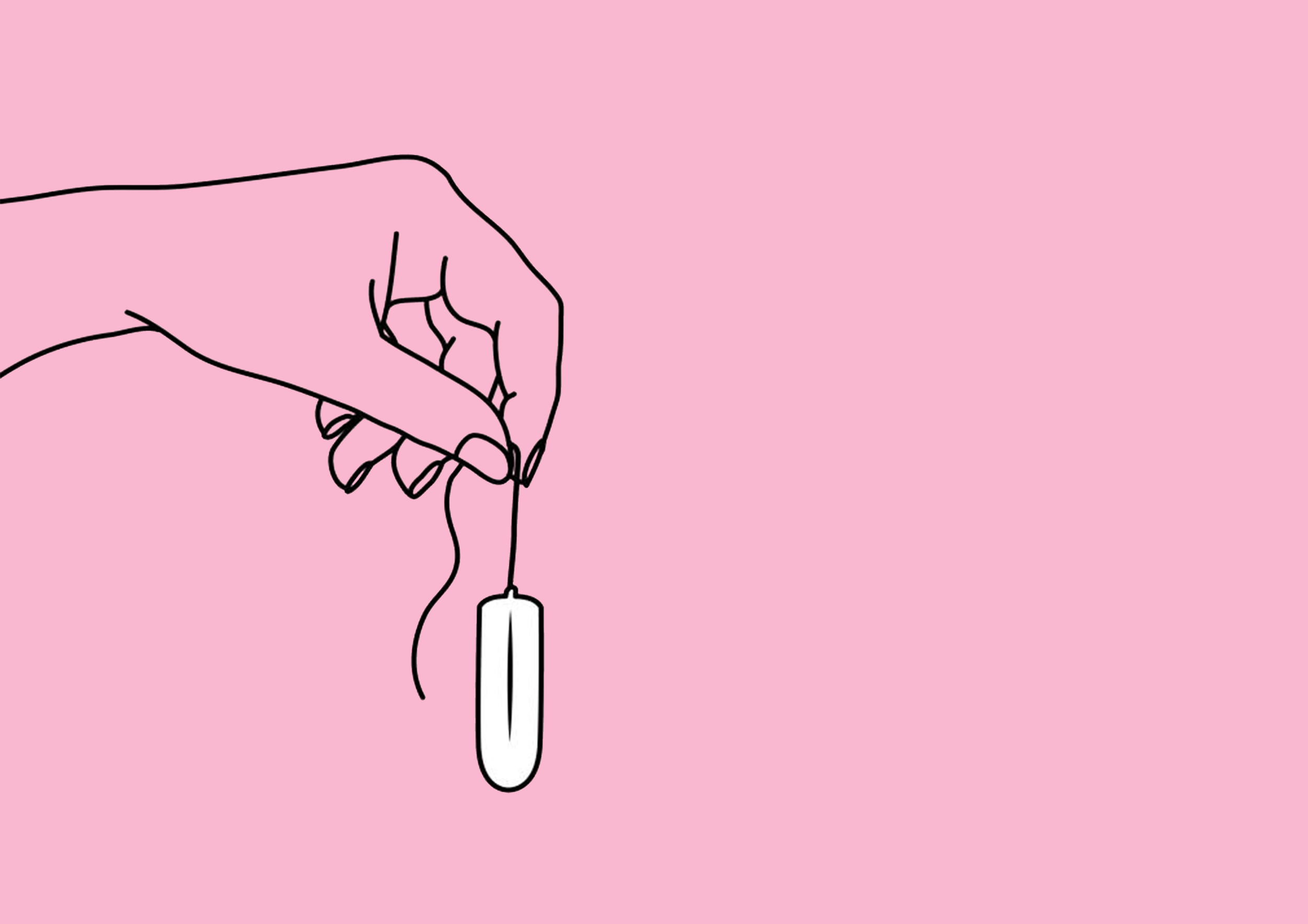Bloody Brilliant: WTF, PMS?
Something that’s really important to us at The Unedit is maintaining and amplifying important conversations in a way that you may not typically find them elsewhere – and that oftentimes coincides with a lack of general awareness. When it comes to periods, a shockingly small number of people received what you would call a sufficient amount of education, which largely is at fault of the education system and the societal stigma around menstruation. With that, we wanted to offer a safe, detailed insight into periods for our readers, so we teamed up with organic tampon company, OHNE, for our latest series: Bloody Brilliant. Each month we’ll be tackling a different aspect within the world of menstruation and with the help of experts, we’ll be taking you far beyond the usual ‘time of the month’ spiel that your awkward school nurse might have given you.
I first heard about PMS around the time I actually got my period. Nobody really told me what it meant, so my knowledge about it through school extended no further than expectations of spots and mood swings. So essentially, if I woke up with a single whitehead, or was being a moody teen full to the brim with angst on any one particular day, I just assumed that was what PMS was about. I’ve also realised, as a result of talking more openly about periods and educating myself more about them (albeit encouraged by my own struggle with PCOS), that not many other people really know what’s up with it, either. And considering we live in a world where so much time and money is put into research around men’s issues – erectile dysfunction, anyone? – in the immortal words of Carrie Bradshaw, I can’t help but wonder why nobody seems to give enough of a crap about PMS.
So what even is PMS? To take it down to the simplest of laymen’s terms, it’s Premenstrual Syndrome, and it’s basically the term used to describe the variation of symptoms that women (or people with periods) suffer a week or so before their time of the month. The PMS train pulls in after Ovulation Station and hits at the very end of your cycle (remember, the first day of your period marks the first day of your next one), and it’s the time where your hormones are all over the shop and can wreak total havoc until the floodgates – or should we, bloodgates (sorry, terrible pun) – open. PMS, just like periods, can look very different to each individual, so we’re here to break some of it down for ya.
Turns out, PMS is more than a couple of spots and mood swings (thanks for nothin’, Mrs Lewis). It can manifest itself in a variety of physical, emotional and mental symptoms, and with approximately three quarters of women suffering from PMS in some capacity, you might find that reading this seems to turn into a bit of a pre-period checklist.
Physical symptoms include but aren’t limited to:
cramps
bloating
swollen or sore breasts
headaches
backaches
joint or muscle pain
nausea
clumsiness
hormonal acne
lower tolerance for light or noise
constipation
diarrhoea
And whilst any number of those joys can be doing their thing, so can any of these:
mood swings
fatigue
insomnia
feeling irritable or hostile
food cravings or appetite changes
difficulty with memory or concentration
feeling tense or anxious
feeling depressed or sad
episodes of tearfulness/crying
loss of libido
Basically, it’s an all-you-can-suffer buffet, except you don’t get a choice in what goes on your plate. Wonderful, right? And to make it even more fun, researchers don’t even really know what causes PMS, aside from the fact that our fluctuating hormones play a role. This takes us back to the aforementioned frustrations that science seem to worry more about cis men being able to get laid than the crap that we have to tolerate every single month whether we like it or not.
And get this: if you suffer from other health issues, chances are your PMS is going to be even worse. For example, those who suffer from Myalgic encephalomyelitis (ME), otherwise known as chronic fatigue syndrome (CFS), symptoms can often worsen before their period. Plus, sufferers are apparently more likely to have heavier flows and/or premature menopause, according to research. People with IBS may find that their cramping, bloating and wind/gas worsens pre-period too. And whilst these kinds of conditions (not to mention plenty of other chronic illnesses) can heighten the severity of the symptoms that they share with PMS, PMS itself can also worsen other problems, including migraines, asthma, and allergies. And it doesn’t stop there. Those living with depression or anxiety disorders may find that their mental health worsens before their period too.
Whilst the realities of PMS are far from pretty, there’s an even darker side to it that receives even less attention: Premenstrual dysphoric disorder, or PMDD for short. It’s said that around 5% of people with periods suffer from PMDD, which is like a severe form of PMS, which causes symptoms that can interrupt normal day-to-day life each month. Symptoms can include lasting bouts of anger or irritability (that may, in some cases, affect other people), intensified severity of depression and suicidal thoughts and feelings, extreme mood swings, increased anxiety and panic attacks, and feeling out of control. And that’s just the tip of the PMDD iceberg. Any of those are served up with a side of the previously listed physical symptoms that grace us with their presence. Similar to PMS, there’s not much research around the causes of PMDD, but in addition to fluctuating hormones, it’s believed that serotonin (a.k.a. the happy chemical) plays a part. It’s thought that, as our levels increase and decrease throughout our menstrual cycle, some women are more sensitive to the changes, and its drop towards the end of the cycle can have a dangerous impact on mental health.
There are treatments to help keep PMS and PMDD in check respectively. Painkillers such as aspirin and naproxen can be prescribed by your doctor or bought over the counter to keep pain at bay, and some doctors recommend various birth control methods to help reduce symptoms. In cases of PMDD, antidepressants – specifically SSRI’s (selective serotonin reuptake inhibitors) – are prescribed to alter serotonin levels in the brain. It’s also recommended for both PMS and PMDD to avoid stimulants such as caffeine, alcohol and sugar, as well as trying to fit exercise in where possible in order to alleviate symptoms. Sure, these aren’t guaranteed to get you out of pre-menstrual hell, but they can certainly help.
Overall, PMS is just another A1 experience that we get to take in each month on the Ovary Express. Don’t be afraid to speak to your doctor, gynaecologist, or other health professional if you feel that your symptoms are getting too much to handle. Nobody should have to suffer in silence, especially on their period.








